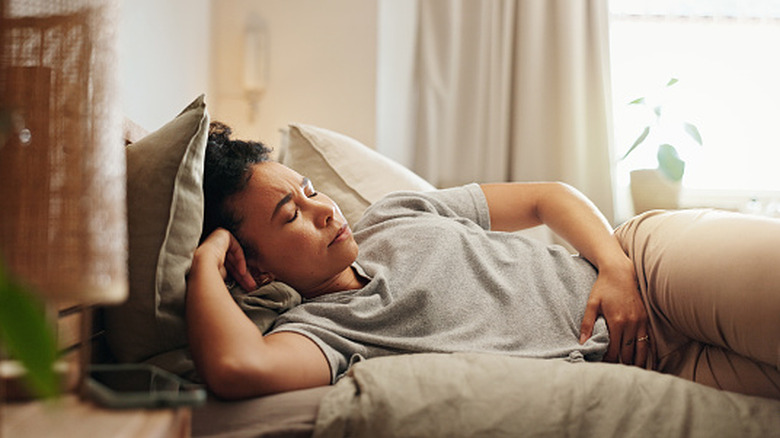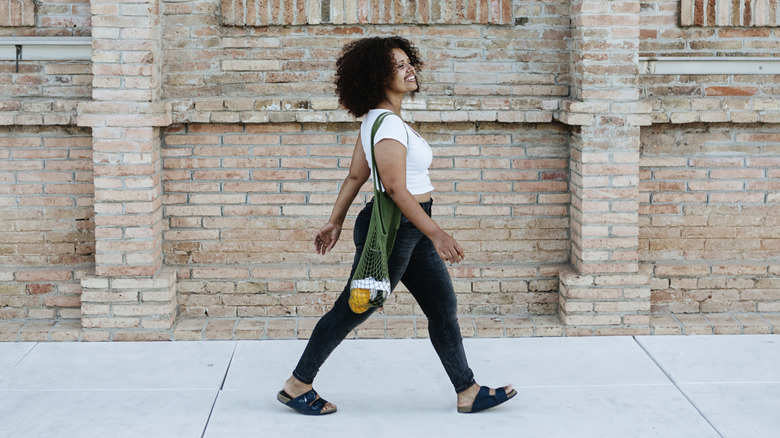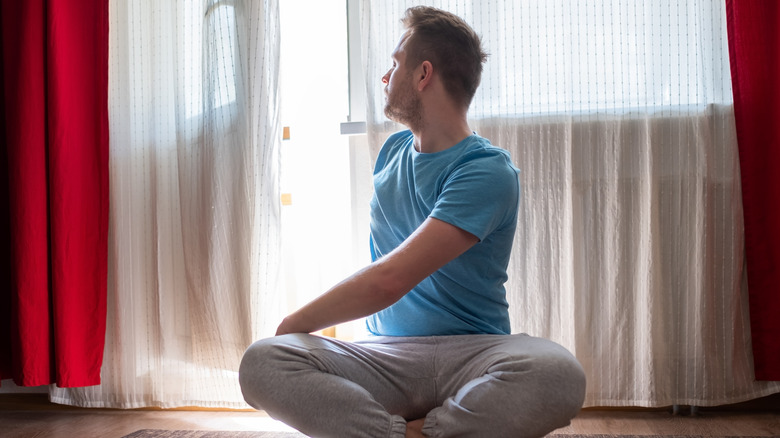One Science-Backed Way To Reduce Bloating After A Heavy Meal
We've all been there. You're enjoying your favorite meal where everything tastes amazing, and you can't resist having just one more helping. Whether you're laughing over dinner with friends or binging nachos during a Netflix marathon, it's easy to ignore those subtle "I'm full" signals until it's too late. Later, reality sets in, and your stomach feels like it's doubled in size. You're debating whether to unbutton your pants or just give up and change into sweatpants. (See if this ingredient is giving you gas.)
Post-meal bloating can make you feel sluggish, heavy, and a little regretful about those last few bites. But the good news is you don't have to just lie there feeling miserable. While over-the-counter remedies like Gas-X can help, one of the most effective (and surprisingly easy) ways to beat the bloat is to move your body. No, you don't have to head to the CrossFit box or look for the nearest spin class. You just have to put on some comfortable shoes and put one foot in front of the other.
How walking can reduce bloating
As much as it may hurt to move after a heavy meal, you might be surprised by how much better you feel after walking slowly for just a few minutes. A 2021 study published in Gastroenterology and Hepatology from Bed to Bench tested walking against medication as a way to treat post-meal bloating. The study lasted four weeks and involved people who frequently experienced bloating. One group took medication 10 minutes before meals, while another group was instructed to walk for 10 to 15 minutes after eating. (Find out why you may be bloated all the time.)
But this wasn't your average walk. Participants in the walking group had to walk slowly with their hands loosely clasped behind their backs and their heads bent so their chins nearly touched their chests. They were also told not to talk during the walk. While they used smartphones to track their steps, they couldn't text or scroll with their hands clasped. They could stop walking once they reached 1,000 steps.
After four weeks, both groups reported less bloating, gas, belching, and stomach discomfort. However, walking was more effective in reducing bloating and feelings of fullness after meals. The researchers believe walking (or any physical activity) activates abdominal muscles and triggers a reflex that speeds up digestion, helping food and gas move through the gut more easily. The specific walking posture with hands behind the back may have added extra pressure to the abdominal area, further helping to push gas through the intestines.
Other ways to reduce bloating
If it's pouring rain or there are a few feet of snow on the ground, walking may not be an option. In that case, try a few seated yoga twists to gently activate the muscles in your abdomen. You don't need to twist deeply like you might in a hot yoga class. Instead, focus the movement around the base of your ribcage, and avoid using your arms to force a deeper twist. Move slowly and hold the position when you reach your natural stopping point. You can also try some of these other movements to relieve trapped gas.
A hot water bottle or heating pad can also help. Applying heat to your abdomen may relax the muscles and ease some of the discomfort caused by bloating. The warmth may also stimulate your parasympathetic nervous system, which is your "rest and digest" mode.
After dinner, it might be tempting to reach for a cup of coffee. But coffee (even decaf) can sometimes cause indigestion or increase bloating. Instead, try a cup of herbal tea. Peppermint and ginger help relax the muscles of the digestive tract, while chamomile may reduce inflammation.
To prevent future bloating, try identifying and limiting foods that seem to trigger that gassy feeling. Drinking plenty of water during meals can also support digestion and help you avoid overeating or eating too quickly. While high-fiber foods can cause gas at first, gradually increasing your fiber intake can help prevent constipation and the bloating that often comes with it.


